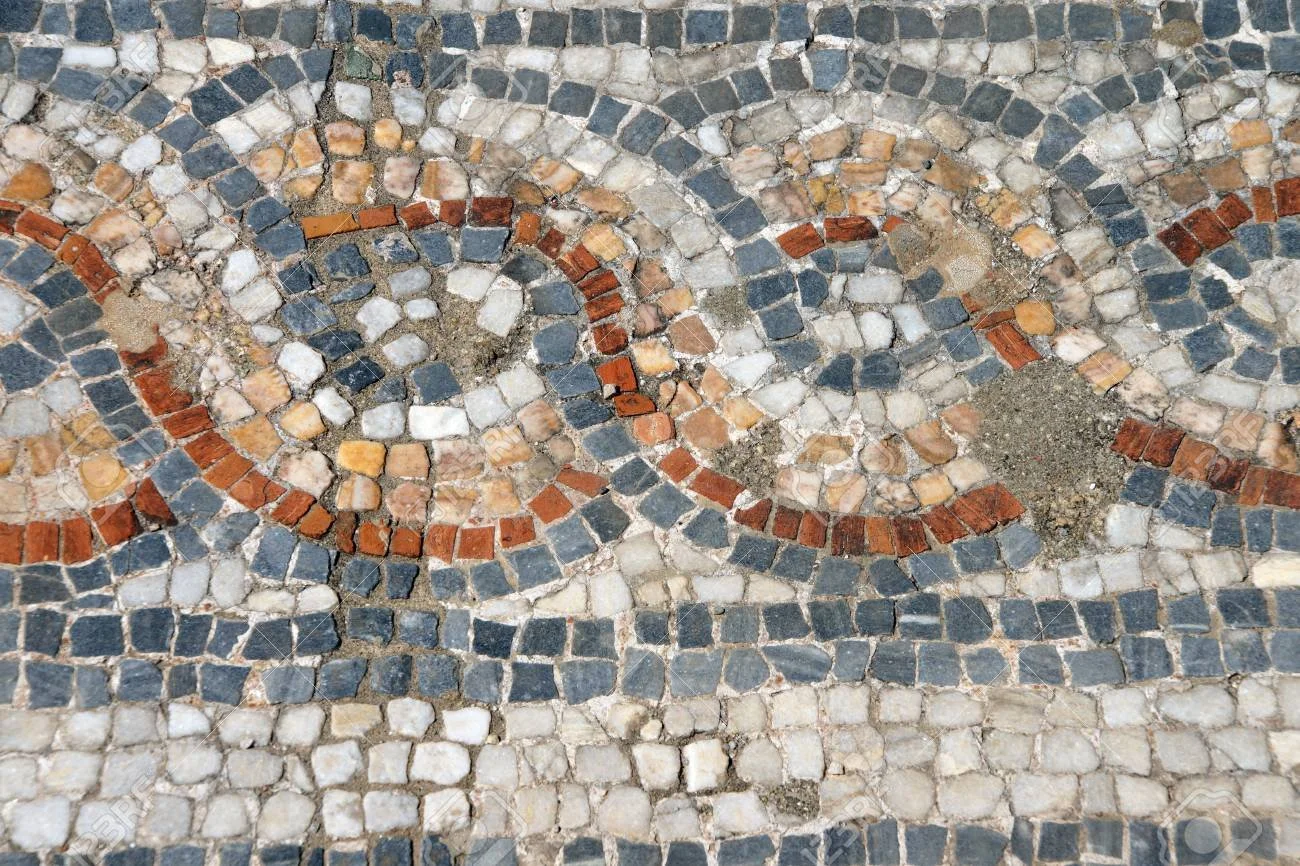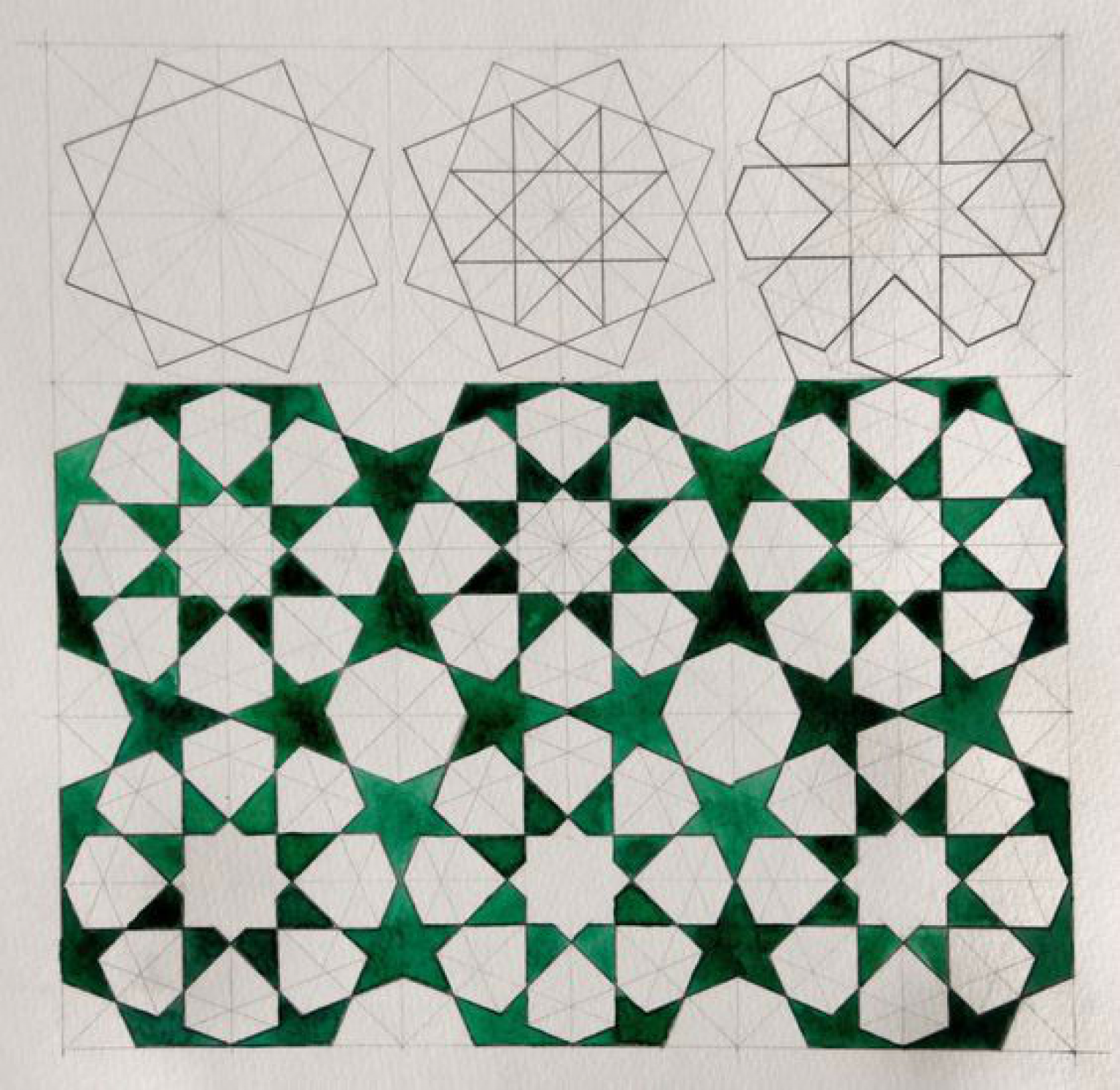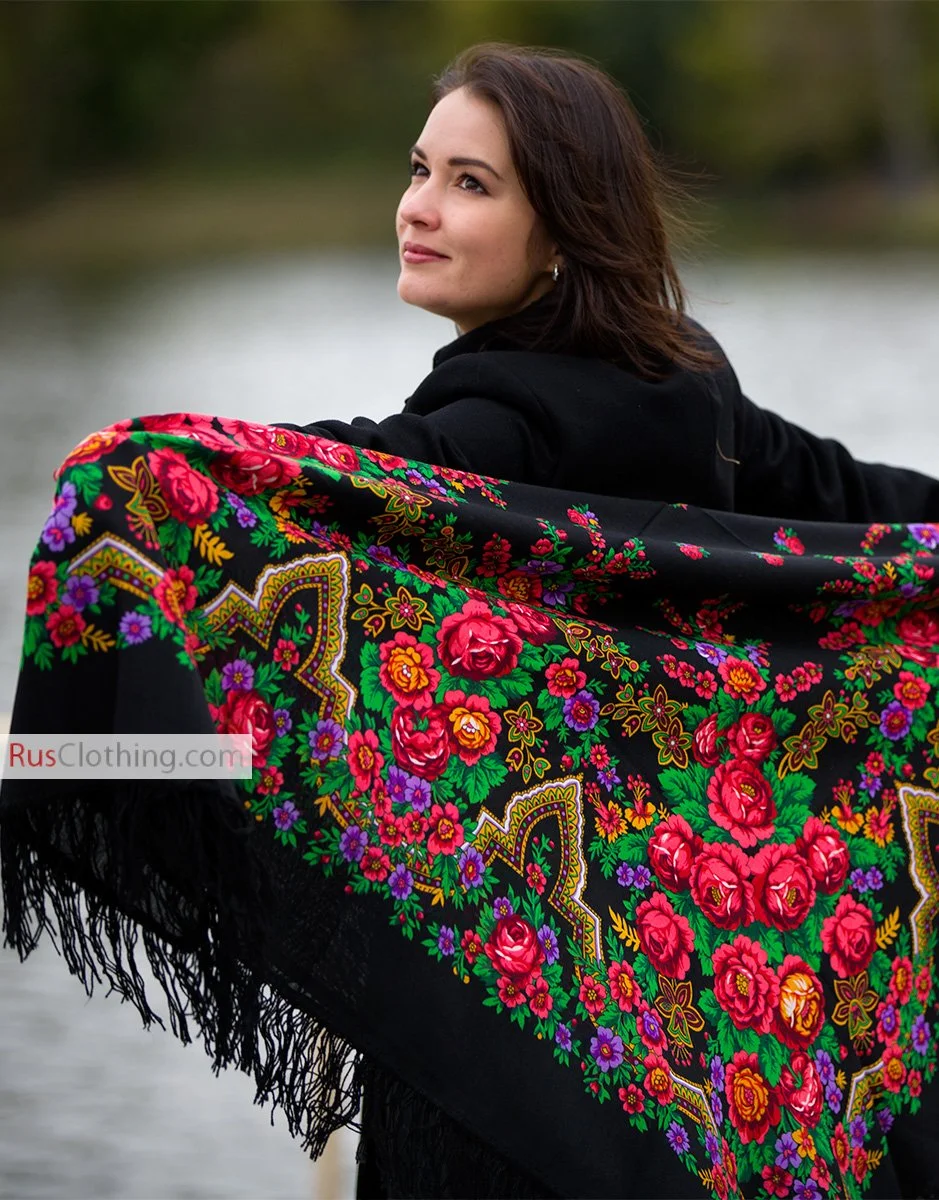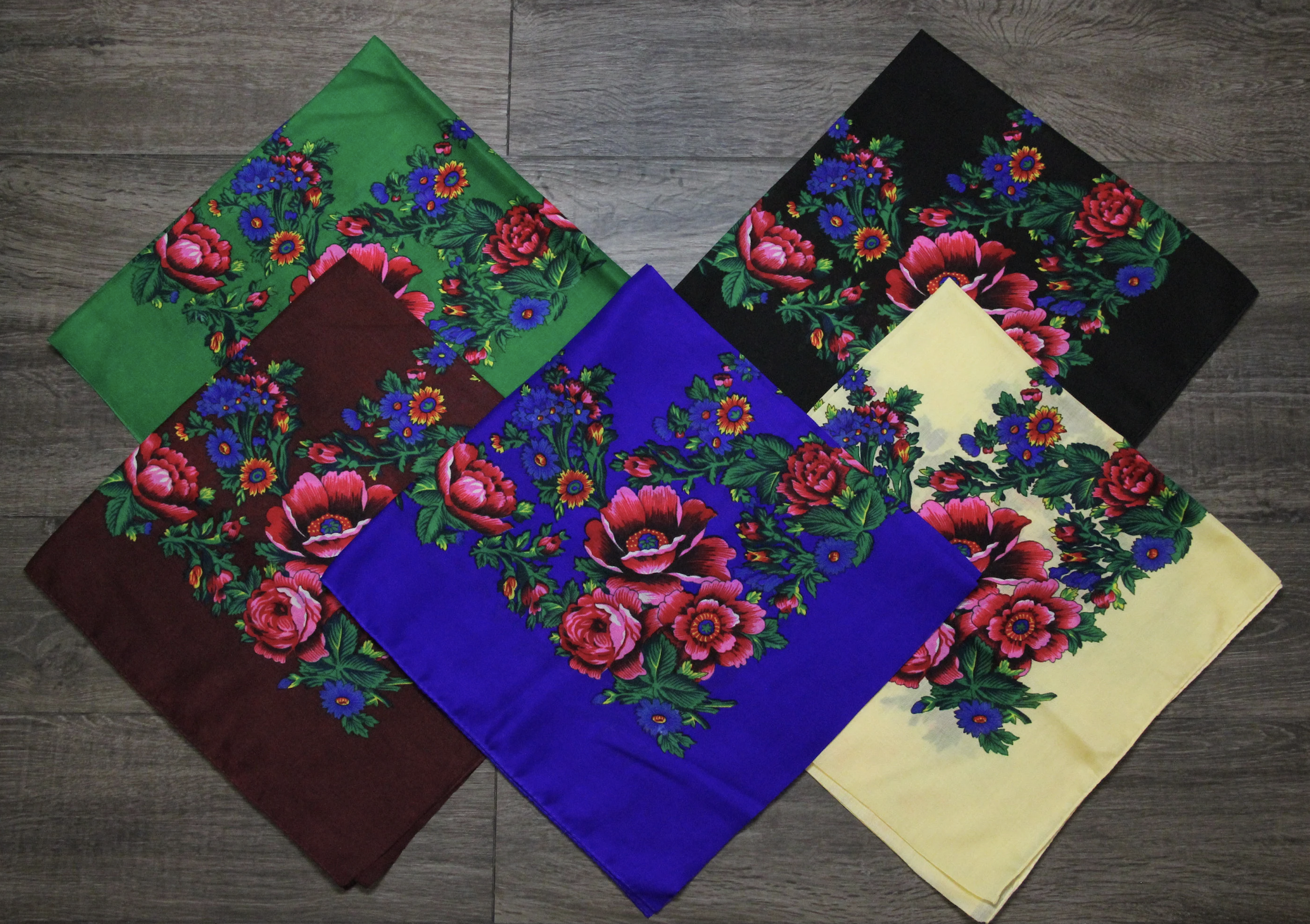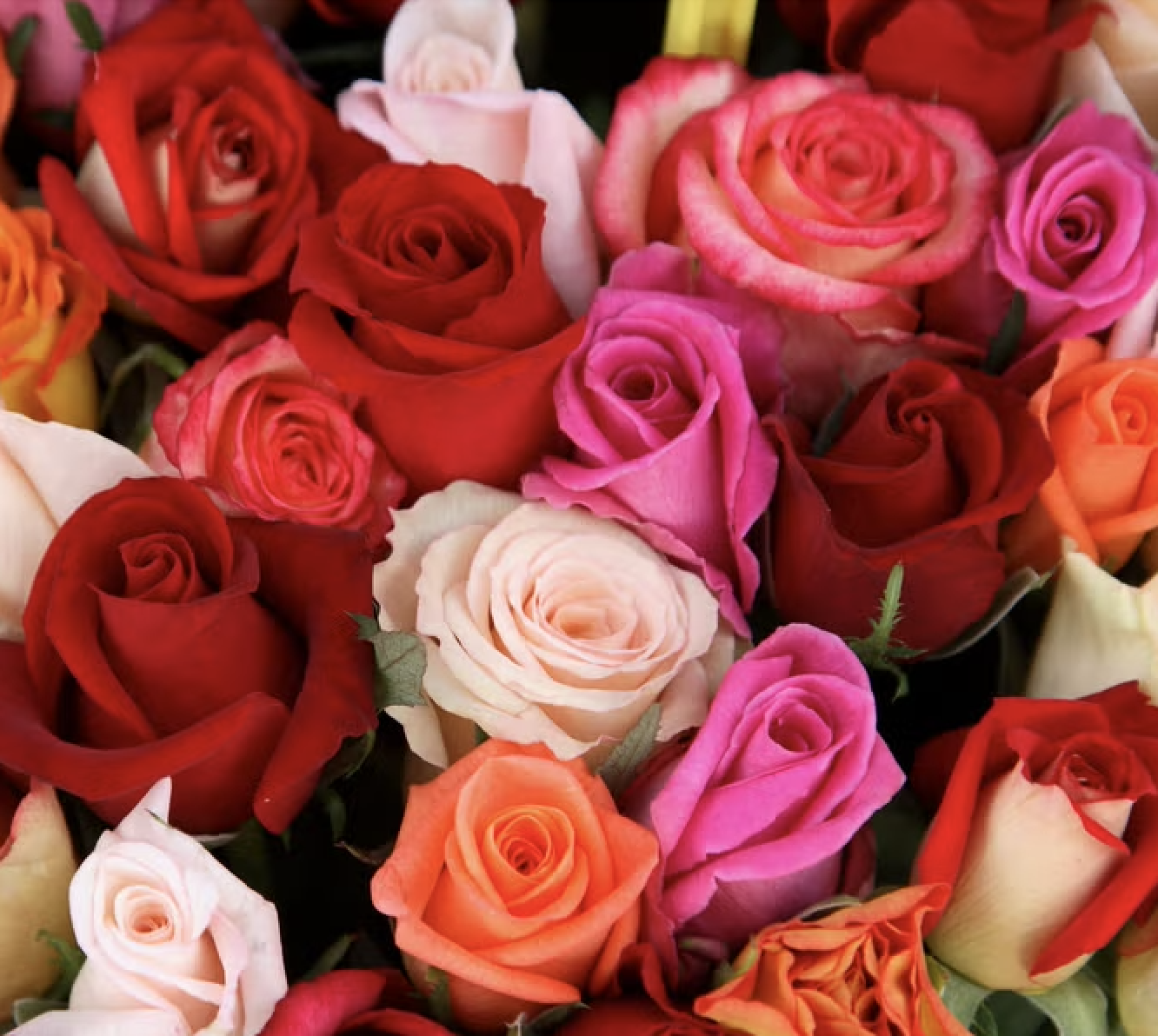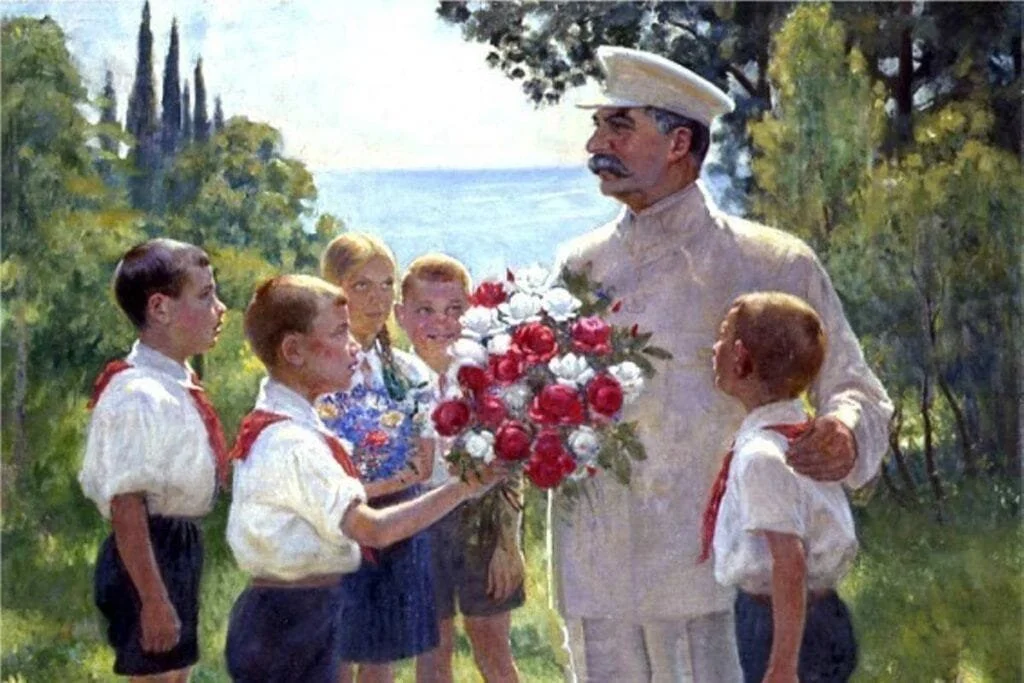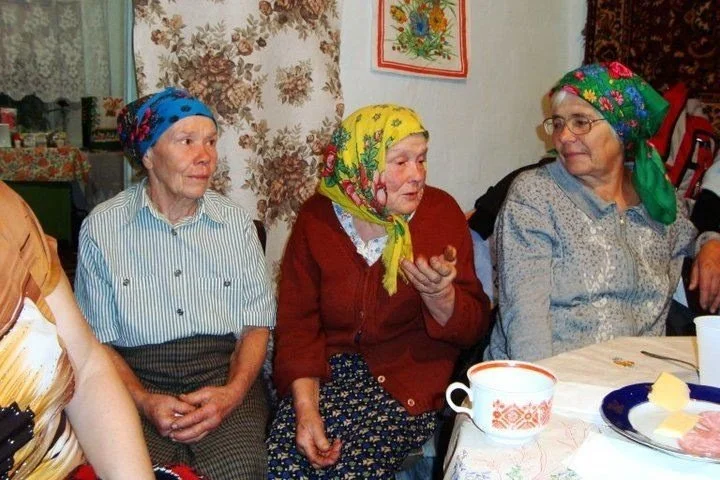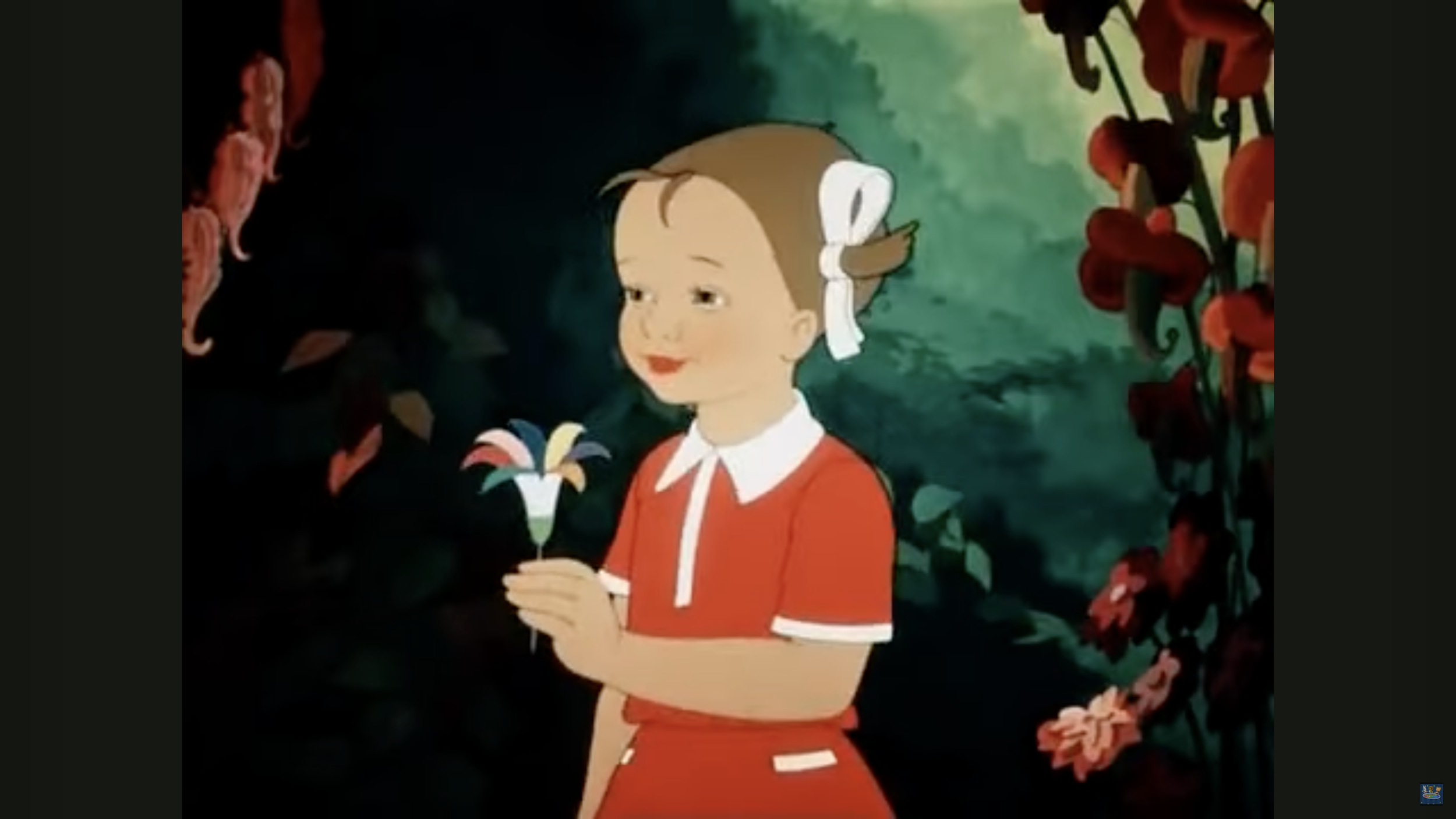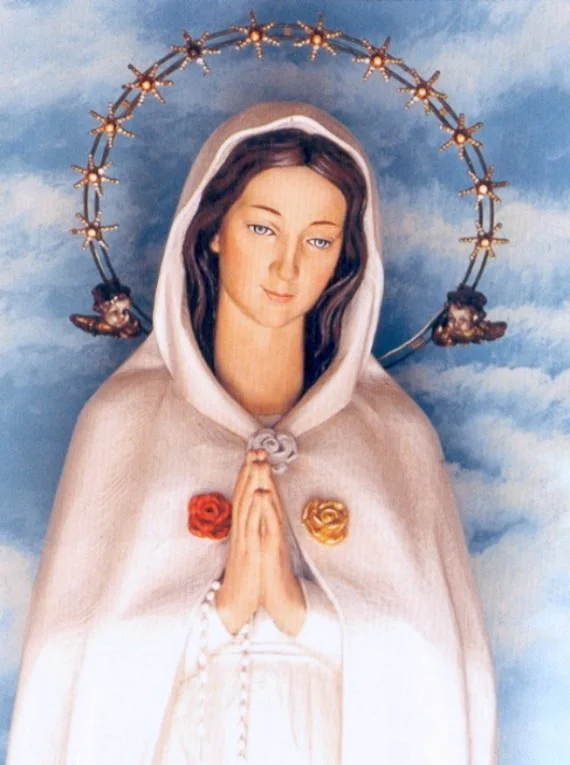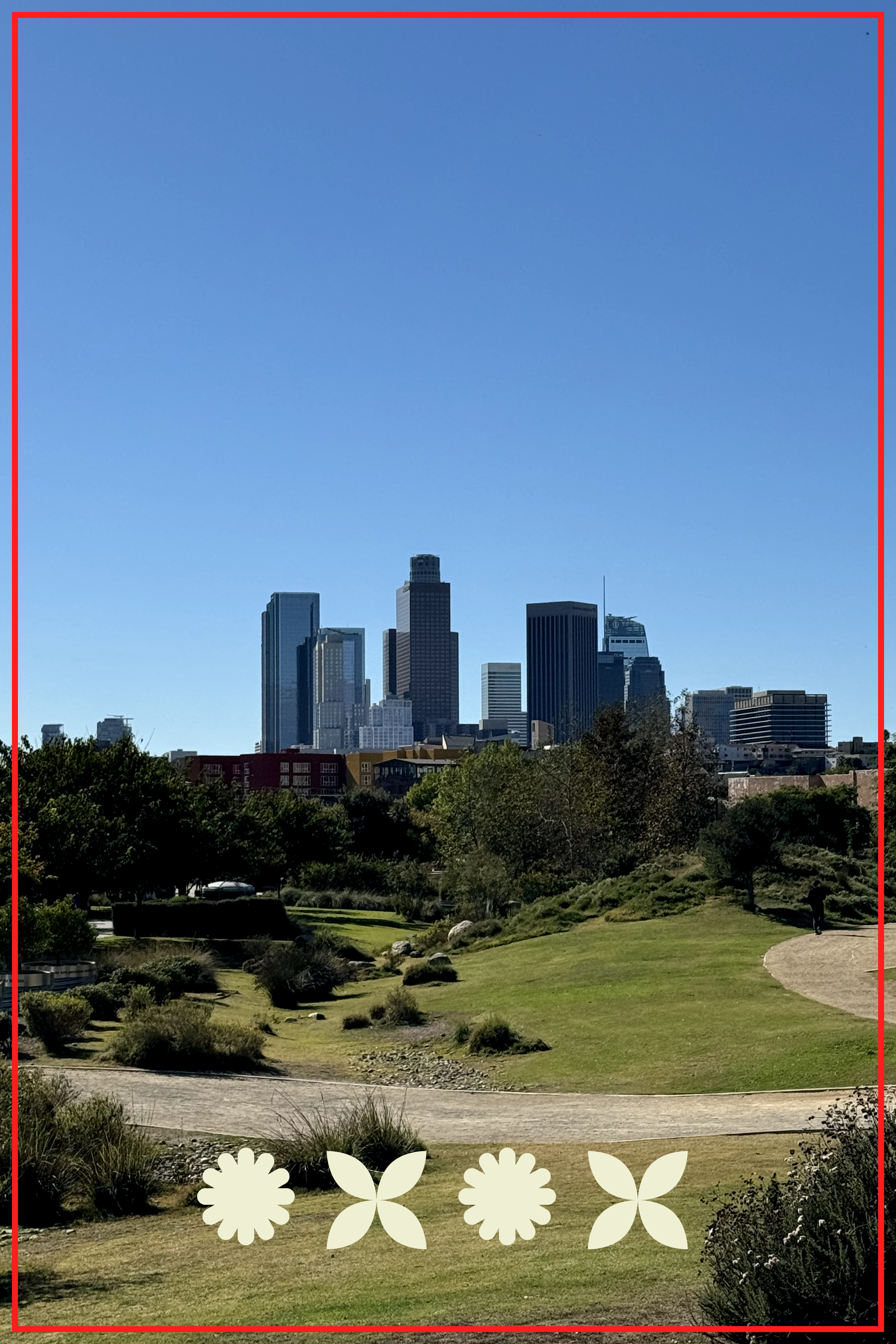Talk For The Wende, Pixels To Petals: How Ancient Symbols Travel Through Time And Technology
In glowing screens, pixels arrange into roses through simple repetition—the same principle medieval embroiderers knew when building flowers stitch by stitch. Yet long before pixels existed, artisans knew this truth: complex beauty emerges from simple repetition. From ancient sacred geometry to Soviet textiles, archetypal symbols travel across cultures and technologies, carrying spiritual meaning through the language of beauty.
Photo by Art Institute of Chicago on Unsplash
Join upcoming events on Eventbrite
〰️
Join upcoming events on Eventbrite 〰️
This research emerges from my role as an invited artist at the Wende Museum in Culver City, designing workshops with Cara Megan Lewis exploring folklore and mythology through textile arts as part of their ongoing series connecting traditional crafts to cultural memory inspired by their Cold War archive. Through hands-on exploration of embroidery, ornament, and pattern-making, we're discovering how ancient symbols continue to carry meaning across borders and generations.
I have a short flower story of my own. In 2023 on a hike, a blooming bush of yellow California Poppy started talking to me. It called me to look at its bright, perfect and open blooms. I was taken away by how brave each one of the blooms were. Just around the perfect flowers were others that had peaked and started their decline. Some with half petals, some with two petals remaining in total decline and approaching the end to invisibility. In that moment I realized, I was not living fully. I was scared of blooming due to what comes after - death. I kept hiking but this conversation with flowers stayed with me, teaching me to live life more fully. I learned so much that day from the bright yellow rosette who bravely lived in sunshine with no fear or reservation.
This moment of botanical awakening led me deeper into understanding how flowers have always served as messengers of transformation across cultures. What follows is the rich story of symbols transcending their medium—how the rose that adorned a Persian garden, bloomed in a Cherokee legend, decorated a Soviet scarf, and now appears as an emoji carries the same essential meaning across millennia. Medieval embroiderers built roses stitch by stitch, Islamic artists wove infinity from geometric fragments, beadworkers accumulated tiny spheres into sacred patterns. These aren't mere decorations but a form of cultural DNA, transmitting spiritual knowledge through the seemingly innocent language of beauty.
Key Threads
Key questions this article explores:
How do universal symbols like roses travel across cultures and technologies while maintaining their essential meaning?
What can embroidery patterns teach us about how humans have always created "pixels"—complex images from simple, repeated elements?
Why do certain archetypal symbols (like roses representing the heart) persist across millennia and mediums?
How do domestic arts secretly preserve sacred geometry and cultural memory, especially during times of spiritual suppression?
The Technology Of Meaning: From Ancient Pixels To Digital Roses
The word "pixel" comes from "picture element" (pix + el), coined in 1965 by Freddie Billingsley at NASA's Jet Propulsion Laboratory while working on digital image processing for lunar missions. Long before digital screens, humans understood that complex wholes emerge from simple, repeated actions. The word "pixel" may be modern, but the concept spans millennia. Ancient mosaics built intricate scenes from tiny colored stones. Medieval illuminators created elaborate manuscripts through countless pen strokes. Islamic artists wove infinite geometric patterns from basic shapes repeated across mosque walls.
The most profound example might be embroidery itself—where individual stitches, like pixels, accumulate into images of startling beauty and meaning. A babushka's cross-stitch rose required thousands of tiny X's, each placed with intention, each contributing to a larger pattern that carried cultural memory forward through generations. This parallel isn't coincidental. Both pixels and stitches represent humanity's eternal desire to create meaning through accumulation—to build something greater than the sum of its parts through patient repetition.
Whether we're arranging colored light on screens or colored thread on fabric, we're participating in the same fundamental human activity: transforming simple elements into complex communication.
The technology changes, but the impulse remains constant. Each medium—mosaic, embroidery, beadwork, digital art—offers different possibilities for expression while following the same basic principle: meaningful complexity emerges from simple, repeated elements when arranged with intention and care.
While researching templates for rose embroidery (схемы по вышивки розы), I found a nifty pixelation tool. It helped me test the complexity of flowers we could undertake for the craft portion of the class as well as calculate my budget for thread based on how many color variants surfaced. It is wild that women used to do these complex shade modeling calculations in their heads! Now add to this having to dye your own yarn for every shade in the design. A.N. Veselovsky, in his 1898 work "From the Poetics of the Rose" (Из поэтики розы), offered a key insight about the "capacity of the image" (емкость образа). Some symbols survive cultural transmission because they have greater "емкость" (capacity/volume) to hold accumulated meaning. The rose "won the battle for life" against other flower symbols because it could contain more symbolic content—love, death, beauty, suffering, transformation, the divine. This "capacity" explains why certain patterns persist across cultures and centuries: they can hold more human meaning and adapt to new contexts while maintaining their archetypal power.
The Rose As Universal Code: Archetypal Symbols Across Cultures
The rose appears across cultures with remarkable consistency, yet carries distinct meanings shaped by local wisdom and spiritual traditions. From Sufi poems where it symbolized divine love—a metaphor for the heart's mysterious landscape—to the Rosicrucian rose as spiritual passage from material existence, to Native American traditions where Cherokee tears became white petals with golden centers during the devastating Trail of Tears that forced thousands from their homeland, to Soviet domestic spaces where embroidered roses maintained spiritual connection during religious suppression—the same flower carries humanity's deepest longings across vastly different contexts.
The rose-heart connection transcends cultural boundaries because it speaks to universal human experience, a meeting place between earthly and sacred. In Egyptian burial practices, if the heart was lighter than a feather, the soul achieved eternal life. The Greeks endowed the rosebud with a symbol of infinity, considering the round shape of a rose with no discernible beginning or end to be a powerful metaphor for boundless love and eternity. The physical resemblance runs deeper than surface similarity—the rose's layered petals unfurling from center to edge mirrors how emotions emanate from the heart's core.
Each velvety petal speaks of intensity of emotions, the depth of desire and all-consuming nature of true love, while its protective thorns echo our need to guard our emotional center while yearning to open it to love. This archetypal journey through rose colors reveals a complete spectrum of feminine experience. Deep burgundy roses represent "unconscious beauty" and the dark feminine/erotic archetype, embodying intense passion and the mysterious depths of desire. Red roses carry the flame of conscious love, connecting to the sacred blood of Adonis the lover of Aphrodite, and romantic devotion. Pink and white roses symbolize innocence and purity, connecting to the virgin archetype and spiritual awakening. Peach and coral roses, often overlooked, represent the nurturing mother archetype—"modesty, gratitude, and tender affection" that sustains communities and families.
The persistence of rose symbolism across political systems reveals its archetypal power. Even as official Soviet ideology rejected traditional spirituality, the archetypal power of flower symbolism found expression through children's animation, carrying forward ancient wisdom about transformation and moral choice. The Scarlet Flower, 1952 (Alenkiy Tsvetochek) the Soviet adaptation of Beauty and the Beast, centered on a magical rose that represented transformation through love and sacrifice—the flower becoming a catalyst for transformation disguised as fairy tale entertainment. The Seven-Colored Flower, 1948 (Tsvetik-Semitsvetik) told of a girl who receives a magical flower with seven petals, each granting one wish, exploring the eternal tension between selflessness and selfishness through the metaphor of petals that could fulfill any desire. The number seven holds profound significance across spiritual traditions: Islam features seven heavens, seven earths, and pilgrims circle the Kaaba seven times during Hajj; Hinduism speaks of seven chakras/colors and seven sacred cities; Buddhism has seven factors of enlightenment; even ancient Mesopotamian and Egyptian cultures revered seven, often associating it with completeness and divine perfection. These films encoded profound spiritual teachings about the power of love, the consequences of moral choices, and the archetypal journey from selfishness to compassion—all through the "innocent" language of animated flowers that Soviet authorities couldn't recognize as subversive instruction.
Sacred Geometry In Domestic Spaces: Hidden Wisdom In Plain Sight
The most remarkable aspect of traditional patterns lies not in their beauty but in their function as vehicles for preserving sacred knowledge. The Flower of Life—a geometric pattern consisting of multiple evenly spaced, overlapping circles arranged in a flower-like pattern, also known as mandala—appears across cultures and millennia, based on the hexagonal structure found throughout nature in honeycomb, snowflakes, and cell division. Rose windows in Gothic cathedrals like Notre Dame and Chartres weren't merely architectural marvels—they were "symbols of the well-ordered soul" where "the pilgrim coming to the cathedral for spiritual enlightenment would be encouraged to meditate upon the rose of light and color in order to be drawn into mystical conformity with it."
In Dante Alighieri's "Paradiso," the Cosmic Rose, also known as the Celestial Rose, is a radiant, rose-shaped structure in the Empyrean, the highest realm of Heaven, where God resides. The rose is composed of the blessed, with the petals formed by their souls, and its center is the source of divine light and love. In Christian mysticism, the Virgin Mary as divine mother and the female aspect of creation is called Rosa Mystica for purity and divine love. In Medieval courtly love, the rose represented the beloved's heart—the Holy Grail that required a heroic journey to attain. The same mathematical perfection that structured these cathedral roses appeared centuries later in grandmother's embroidery hoops.
Women across cultures became the keepers of this geometric wisdom, encoding it in patterns passed down through generations. Buddhist and Hindu traditions used lotus mandalas to represent spiritual unfolding, transformation, evolution and enlightenment, while Islamic geometric art created complex floral patterns with eight-fold rosettes representing paradise, divine order and Allah's infinite creativity. Each tradition found ways to preserve these sacred proportions through domestic arts, ensuring spiritual knowledge survived even when formal religious education was restricted.
The mathematical precision underlying these patterns reveals their deeper purpose. Whether appearing in American quilting traditions "Dresden Plate" and "Rose of Sharon" as quilt block patterns, Mexican Day of the Dead celebrations which feature roses as bridges between worlds, Native American medicine wheels, or Ukrainian vinok floral crowns, these circular, radiating designs encode the same universal principles: "the cycles of time, seasons, life stages, cosmic rhythms, and unity in diversity (many petals forming one flower)." This tradition of preserving sacred knowledge through domestic arts proved particularly crucial during periods of spiritual suppression, when official religious practice was forbidden but geometric wisdom could survive hidden in the patterns of everyday textiles.
“Everyone can call on the magic powers of the web of life. You have to find it in yourself.”
Resistance Through Beauty: Preserving The Sacred
Perhaps nowhere is the subversive power of floral symbolism more evident than in its persistence during periods of spiritual and cultural suppression. When Soviet authorities systematically dismantled religious institutions and traditional practices, embroidered roses bloomed defiantly across domestic textiles, carrying forward spiritual symbolism through the "harmless" language of feminine decoration. Flower symbolism was simultaneously used by Soviet Realist art in posters, paintings and murals in celebration and ceremonies of the time, externally signaling potency, promise and aliveness—coding the agricultural growth of the historical period through the language of seizing life, blooming Spring and fruiting Summer as marketing of a promising regime.
This wasn't mere nostalgia but active cultural resistance. Cross-stitch embroidery became a form of encoded spiritual practice when official religion was erased from public life. The research shows that "in the southern Romanian zone of Bucovina, the red and black rose patterns dominate" during this period, suggesting that these high-contrast color combinations emerged as a visual language of resilience—vibrant life (red roses) persisting against the backdrop of suppression (black backgrounds). The parallel to Lewis Carroll's "Painting the Roses Red" becomes particularly relevant here. The card gardeners embody quiet rebellion through their act of painting white roses red, using creative subversion to appear compliant while actually deceiving authority as a survival strategy.
Soviet women engaged in similar acts of symbolic transformation—maintaining spiritual practices through domestic arts that appeared politically neutral while carrying profound cultural meaning. This tradition of resistance through beauty extends across cultures. Kokum scarves—"brightly colored, floral-patterned scarves that hold cultural significance for Indigenous peoples in Canada and the United States"—originally brought by Ukrainian immigrants, became "a symbol of solidarity and friendship between Indigenous and Ukrainian communities." The same rose patterns that survived Soviet suppression found new meaning in solidarity between displaced peoples.
The genius of this resistance lay in its invisibility to those who didn't understand the code. Authorities might ban religious icons, traditional ceremonies, and cultural gatherings, but they couldn't outlaw flowers on tablecloths or roses on scarves. Women became the keepers of cultural DNA, ensuring that spiritual symbolism survived by embedding it in the aesthetic language of daily life. What emerges is a sophisticated understanding of how meaning travels through seemingly innocent carriers. The babushka teaching her granddaughter to embroider roses wasn't just passing on a craft skill—she was transmitting centuries of accumulated wisdom about beauty, spirituality, and the archetypal patterns that connect human hearts across time and circumstance.
Woven Wisdom
Truth worth holding onto:
Symbolic Persistence: Archetypal symbols like roses transcend their medium, carrying essential human meanings across cultures, technologies, and political systems through their capacity to hold accumulated significance.
Domestic Ritual: Traditional crafts served as vehicles for preserving spiritual and cultural knowledge during periods of suppression, proving that beauty itself can be a form of resistance when encoded with deeper meaning.
Sacred In Daily Life: The most profound spiritual knowledge often travels through the most ordinary objects—embroidered textiles, patterned scarves, decorated pottery—making the sacred accessible in daily life.
Cultural Memory Toolkit
Pattern Recognition Practice: Notice repeating patterns in your daily environment—from digital interfaces to textile designs to architectural details. Consider what cultural information these patterns might be carrying forward from their origins.
Embroidery As Meditation: Try learning a traditional embroidery technique, focusing on how the repetitive action of stitching creates both meditative state and accumulated beauty—experiencing firsthand how "pixels" of thread become complex images.
Ancestral Pattern Research: Investigate traditional textile or decorative patterns from your own heritage, looking specifically for their symbolic meanings and how they were preserved through domestic arts during periods of cultural change.
As we navigate our own era of rapid technological change, these ancient patterns remind us that meaning-making transcends its medium. The same impulse that led medieval nuns to embroider sacred roses, Soviet grandmothers to stitch spiritual symbols into scarves, and NASA engineers to create "picture elements" continues in our contemporary work—whether we're arranging pixels on screens, stitches on fabric, or ideas in writing.
The rose carries forward humanity's deepest wisdom about love, transformation, and the sacred nature of beauty itself. In recognizing these connections, we participate in the same eternal human activity: creating meaning through repetition, preserving wisdom through beauty, and ensuring that the patterns which connect us across time continue to bloom in new forms for future generations to discover and decode.
What patterns are you preserving? What symbols are traveling through your hands into the future? In a world where algorithms increasingly shape our visual environment, understanding how meaning travels through repeated elements—whether pixels or stitches—becomes not just artistic knowledge but essential literacy for navigating the symbolic landscape of our time.
Events
Ready to dive deeper? Join our community of master artisans, cultural stewards, and creative practitioners exploring the intersection of traditional craft and contemporary life. Classes, intensives, and ceremonial gatherings across LA and online for artists, designers, crafters, illustrators, and makers of all backgrounds and levels. Our programs unite ancient wisdom with contemporary practice, cultivating living heritage through embodied craft, storytelling through making, communion with nature, cultural preservation, meditative practice, and the celebration of life's luminous beauty.
#symbolicpatterns #roseembroidery #pixelstopetals #sacredgeometry #culturalresistance #domesticwisdom #archetypalroses #embroideryhistory #sovietflorals #traditionalsymbols #patternpersistence #craftasresistance #symbolicmeaning #crossstitch #floralfolklore #visualculture #culturaltransmission #spiritualcraft #textilehistory #meaningmaking

